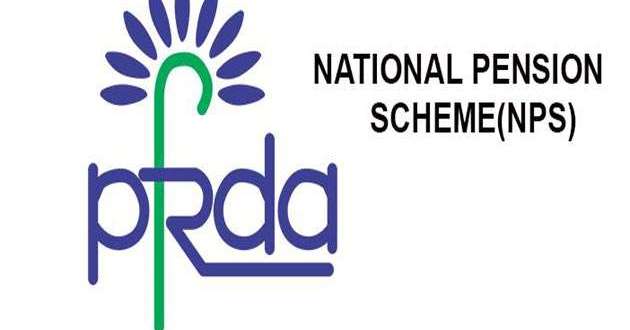Budget expectations: Ahead of the Union Budget, it is being reported that the National Pension System (NPS) may see some significant changes for the central government employees. It is being reported that the Centre may offer 50% of the final pay drawn as a pension for central government employees who have enrolled under the NPS. This would be done in order to address their concerns regarding pension payouts, even though the Centre has said that the NPS will offer attractive returns for those who remain invested for 25-30 years, especially for those recruited after 2004. While ruling out a return to the Old Pension Scheme (OPS), the government is actively exploring ways to ensure that employees receive a substantial pension amount, potentially up to 50 percent of their last drawn pay.
Earlier this year, FM Sitharaman had set in motion the formation of a committee led by Finance Secretary TV Somanathan to address concerns regarding pension payouts within the NPS framework.
Also Read : FD interest rate of up to 8%: List banks offering best interest rates on 5-year senior citizen FDs
The OPS, which guarantees employees a defined benefit of half their last drawn salary as a lifelong pension, indexed to the recommendations of the Pay Commission, stands in contrast to the NPS. In the current NPS structure, employees contribute 10% of their basic salary while the government matches this with a 14 percent contribution.
These proposed changes indicate the government’s commitment to providing a level of financial security and stability for central government employees covered under the NPS. The developments surrounding this issue have garnered attention, particularly as various political parties advocate for a revision of the earlier decision.
NPS is a government-sponsored retirement scheme designed to provide financial security during retirement. Subscribers contribute regularly to the scheme, and the funds are then invested in market-linked instruments to potentially yield higher returns compared to traditional pension schemes. Upon maturity, 60% of the accumulated corpus is tax-free, while the remaining 40% is subject to taxation and must be utilised to purchase annuities.
Conversely, OPS caters specifically to government employees, offering them a monthly pension based on their last drawn salary. The primary objective of OPS is to ensure a steady stream of income for employees after they retire. This article aims to elucidate the distinctions between NPS and OPS, shedding light on the key variances between the two retirement schemes.
7 recent changes made to NPS and APY
The latest developments, outlined in the PFRDA circular dated June 14, 2024, signify the continuous endeavours of the government to improve the NPS and APY schemes, aligning with the changing requirements of subscribers and stakeholders.
Also Read : Budget 2024: These sectors are the potential winners and losers of Modi 3.0 budget
The Pension Fund Regulatory and Development Authority (PFRDA) has issued a mandate which requires that the bank verification, with the validation of the name matching, needs to be successfully completed in order to proceed with processing exit or withdrawal requests as well as updating subscriber bank details. This recent directive is intended to uphold precision and deter any unauthorized or deceitful actions, ultimately enhancing the security of the system for the benefit of the subscribers.
2. Penny drop verification
For NPS Lite, a mandatory name verification process through Penny Drop has been introduced for withdrawals on death and partial withdrawals. This measure ensures accurate identity verification, enhancing the reliability of the system during critical transactions.
3. Active Choice investment strategy
Subscribers enrolled in the NPS Regular plan now have the opportunity to select from various Pension Fund (PF) choices within the Active Choice investment strategy three months post-account establishment.
Also Read : PM Kisan Samman Nidhi To Be Doubled In Upcoming Budget? Check New Installment Amount Over Here
4. Systematic Lumpsum Withdrawal
A novel functionality known as Systematic Lumpsum Withdrawal (SLW) has been incorporated for NPS Regular members upon reaching superannuation age. This innovative feature allows subscribers to liquidate their NPS savings in structured intervals by opting for predetermined periodic payouts or specifying an age limit for receiving such disbursements.
5. Pre-Exit Bank Account Verification
Subscribers can verify their bank account details prior to making exit or withdrawal requests via their login. This feature, facilitated by the penny drop functionality, guarantees the precision of bank information, minimising mistakes and enhancing the efficiency of the withdrawal procedure.
6. Subscriber Details Modification
As part of the ongoing enhancements, a new functionality has been implemented to allow for the modification of essential subscriber particulars such as name, joining date, birthdate, and retirement date. To execute these modifications, subscribers are required to submit relevant documentation for verification. By enforcing this protocol, all modifications are diligently reviewed and validated, ensuring the integrity of records within the CRA system.
7. Online withdrawal facility
An online withdrawal facility has been put in place to allow Points of Presence (PoPs) to handle death withdrawal requests for NPS Lite and APY subscribers. The implementation includes the verification of mandatory bank details using the penny drop method. This enhancement aims to simplify the withdrawal procedure and enhance convenience for the beneficiaries of subscribers.
Also Read : ITR Filing 2024: What is Condonation Request that taxpayers can file for delay in ITR verification?
Why government is pushing NPS?
The Reserve Bank of India (RBI) has cautioned against the reversion to the Old Pension Scheme (OPS), highlighting the potential risk of imposing a fiscal burden that is 4.5 times greater than the current National Pension System (NPS). According to the research findings, switching back to the old pension scheme could have adverse effects on government finances, leading to escalated fiscal pressure in the medium to long term.





































